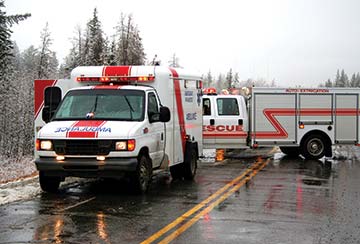
By Peter A. Persuitti
A “black swan” for nonprofits
Today, the pivotal discussion for nonprofits revolves around the issue of the Directors & Officers “limit.”
This focus is not only attributed to the Penn State / Second Mile debacle, but vicariously connected to the financial meltdown, which exposed nonprofit leadership, as well, in fiduciary and governance roles.
Meeting with a new faith-based client recently, I was surprised to learn of an $80-million D&O limit. As I looked deeper, I learned that a current board member (whose background was in insurance) drove the decision. As the newly appointed broker team, it was essential for us to provide relevant benchmarking data, including a report from our partners at Advisen. This documentation facilitated the executive staff to bring to the board justification for reducing the limit and cost, thus reclaiming dollars for ministry.
 Limits are an important issue for faith-based organizations. Twenty years ago, the notion to sue an organization that “did good” was unthinkable. Today, we certainly do have a different climate, and there’s no question that faith-based organizations — especially those with assets — are targets for litigation and payouts.
Limits are an important issue for faith-based organizations. Twenty years ago, the notion to sue an organization that “did good” was unthinkable. Today, we certainly do have a different climate, and there’s no question that faith-based organizations — especially those with assets — are targets for litigation and payouts.
In my 30 years-plus experience working with the faith-based community, I would propose that the largest exposure requiring board examination — and perhaps additional limits (assuring they’re included in an excess or umbrella policy ) — would be related to the nonprofit’s auto coverage, both owned and non-owned.
Think back to recent news events: How many times have we heard about a devastating accident involving ministry members? Not only does this type of misfortune harm people, but we have to be concerned about recovery, especially when we’re told that one out of every seven U.S. drivers on the road has no automobile insurance.
I’ve gained significant insight over the past 13 years from stories and real-life experiences told at an annual meeting of faith-based institutions (those with their own insurance program — captives, risk-retention groups, trusts) called “Common Ground.” I’ll never forget the Salvation Army’s story of its fatal automobile accident, when the team was transporting prison spouses and children to visit their incarcerated family members. The Salvation Army faced more than $38 million in liability demands as a result of the crash. While I support the Salvation Army’s ministry and their activism in demanding change in the manufacturing of 16-passenger vans, the hard facts are that people died.
To cite another case, a volunteer transporting a statue for a faith-based entity — just across town — collided with another driver at an intersection. The impact of the crash left the other driver (no more than 22) paralyzed and in need of 24-hour care for the rest of his life. A $22-million lawsuit against the faith-based institution resulted.
In this case, I often think a courier service could be a risk-mitigation alternative. On one hand, it’s seemingly expensive and outside the normal resources of a nonprofit; yet, the $95 cost seems so incongruent to the resulting $22-million claim.
Fatal or devastating auto accidents are unpredictable. We can certainly do more to transfer risk through contracts and the use of third-party vendors. And, we can proactively deploy a fleet-management program that monitors the vehicles’ maintenance and provides training to ministry teams.
Our church boards need to investigate more deeply the umbrella limits and the need to adequately protect those ministries which promote volunteers and mobile teams.
In a day of your constituencies’ increasing expectations through duty of care, a nonprofit’s insurance program has to contain an adequate limit in the umbrella / excess policy to includes auto liability.
Peter A. Persuitti is managing director, Religious Practice, at Arthur J. Gallagher & Co. in Chicago.


